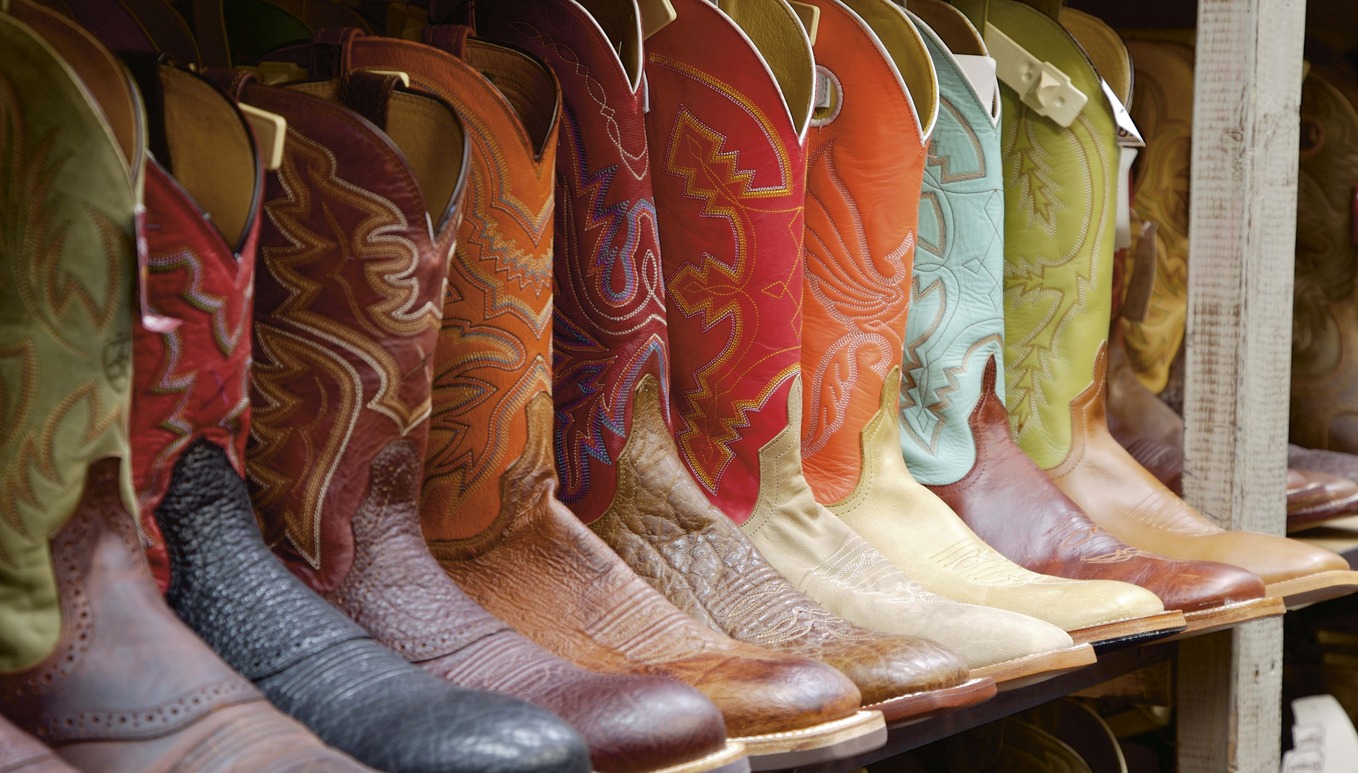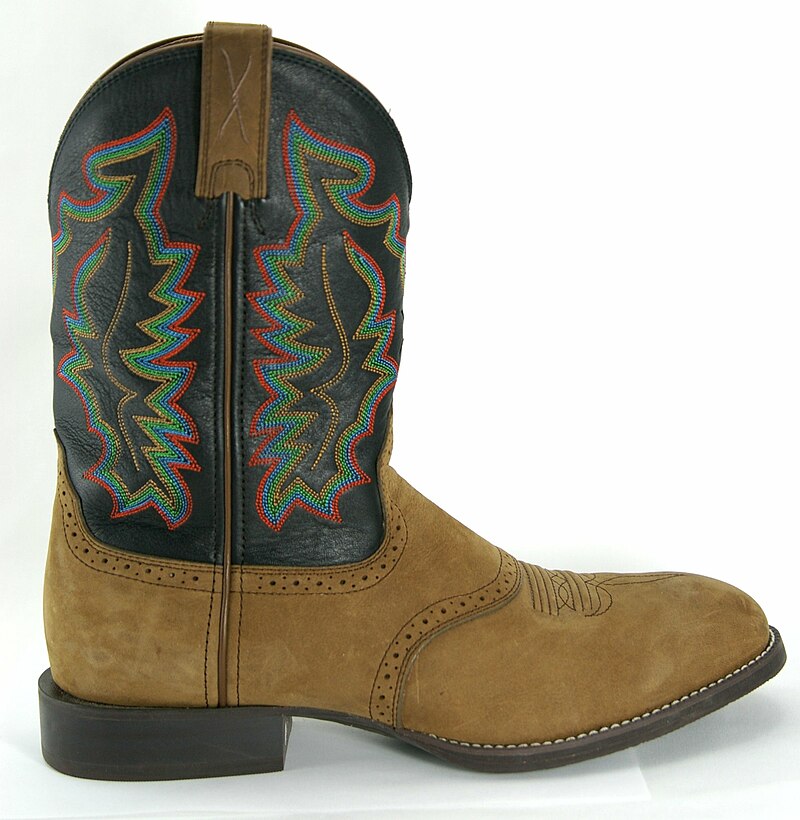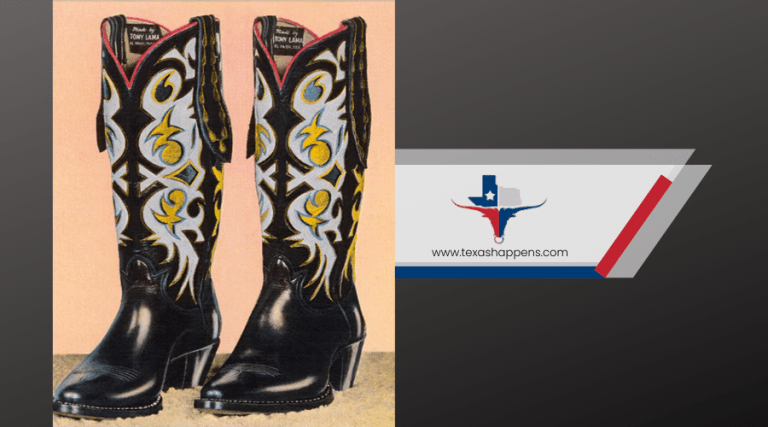Cowboy boots are a symbol of a lifestyle, a piece of history, and a fashion statement all rolled into one. From ranch hands to city streets, cowboy boots have transcended their practical origins to become a timeless icon of Western culture. Recognizable for their unique design and undeniable style, these boots carry a legacy that continues to inspire fashion and function across the globe.
Initially crafted post-Texas Revolution with inspirations from Genghis Khan’s and German Hessian boots, they evolved considerably during the 19th century. Functional elements like high tops and pointed toes were crucial for cattle drives. Over time, they’re transformed into fashion symbols popularized by Hollywood and country music. Esteemed makers like Justin and Lucchese have shaped their prestige.
Origins of Cowboy Boots
Genghis Khan’s footwear and 18th-century German Hessian boots, known for their V-cut and tassels, played significant roles in shaping what we recognize today. These boots didn’t just look good; they had functional features tailored to the needs of their wearers.
As cattle ranching began to thrive in Texas, particularly after the post-Texas Revolution period, the demand for durable and practical footwear grew among cowboys. The real transformation began during the post-Civil War period, from 1866 to 1890 when cattle drives were in full swing. Cowboys demanded boots that could withstand the rigors of their work. They needed footwear that offered protection and ease for long hours in the saddle, leading to innovations inspired by Spanish vaquero boots. These boots featured high tops and pointed toes, both of which were essential for horseback riding and cattle herding.
Evolution of Boot Design

The expedition began post-Civil War, during the trail drives from 1866 to 1890. Cowboys needed boots that offered better functionality for riding and herding, leading to the design innovations of a slimmer profile and higher heel. These elements improved their utility on horseback. Early designs had rounded toes and reinforced insteps, becoming the standard for boot materials and durability.
The need for durable footwear was particularly significant as cowboys engaged in cattle driving, a practice adapted from traditional vaquero methods. In the 19th century, influences from Spanish vaquero boots, known for their high tops and pointed toes, refined cowboy boots further.
As the 20th century rolled in, Hollywood and country music ramped up their popularity. Cowboy boots adopted more decorative elements, like intricate stitching and lively colors, turning them into a fashion statement.
Cultural Symbolism
Cowboy boots reflect a blend of Mexican vaquero influences and Anglo-American traditions, showcasing a unique cowboy identity that’s deeply rooted in the state’s history. You can see this cowboy identity celebrated in every rodeo and country music concert, where wearing cowboy boots isn’t just about fashion—it’s a nod to the rugged individualism and frontier spirit that define Texas and the broader American West.
These boots aren’t just about style; they carry a profound sense of cultural pride. They honor the significant contributions of black cowboys in the late 1800s, who played crucial roles in shaping the cowboy culture. Today, the “yeehaw agenda” movement highlights this history, bringing black cowboys into the spotlight and celebrating their lasting impact.
Cowboy boots have transcended their traditional role, becoming a universal symbol of Texas’s cultural heritage. Designated as the state’s official footwear in 2007, they solidify their standing as icons of cultural symbolism. By wearing cowboy boots, you’re not just embracing a piece of fashion; you’re expressing a deep connection to a storied cultural legacy.
Legendary Cowboy Boot Makers

While celebrating the cultural symbolism of cowboy boots, it’s impossible to ignore the legendary bootmakers who brought these iconic pieces to life. Their contributions have deeply influenced the cowboy culture and Texas heritage, making cowboy boots a staple of personal expression and style.
- Big Daddy Joe Justin: In 1879, he established the Justin Boot Company, pioneering mail-order cowboy boots and boot advancement. His efforts carved a niche in the industry, allowing cowboy culture to flourish far and wide.
- Nocona Legacy: Enid Justin Steltzer launched the Nocona Boot Company in 1925, carrying forward a legacy of quality artistry. Her commitment to high-quality boots expanded the market and defined a significant chapter in boot personalization.
- Lucchese Craftsmanship: Founded by Sam Lucchese in 1883, the Lucchese Boot and Shoe Factory is celebrated for its precise craftsmanship and creative designs. These boots continue to captivate enthusiasts with their blend of tradition and modernity.
- Tony Lama: Starting as a shoe repair shop in 1912, Tony Lama’s brand became synonymous with comfort and style. His dedication to creating the perfect cowboy boot has solidified his place among the greats.
Economic Impact
In recent years, the cowboy boot industry has seen substantial economic growth, particularly in Texas, where it generates significant revenue and supports local economies. The Western boot market is on track to expand by 50% by 2025, approaching $2 billion in annual sales. This surge underscores the economic importance of cowboy boots not just in Texas but nationwide. You can see how market trends are shifting, with consumer preferences leaning towards both traditional and cutting-edge styles.
The Texas boot industry alone contributes hundreds of millions in revenue and creates thousands of jobs across manufacturing, retail, and tourism sectors. You’ll find that custom boot-making businesses are thriving, as the demand for personalized footwear reflects growing consumer interest in unique products. This niche market is a reflection of changing consumer preferences, which fuel the economic engine of the industry.
Brands like Tecovas have adopted a direct-to-consumer model, reshaping retail landscapes and capturing a significant market share. Meanwhile, established names like Cavenders are expanding, planning multiple store openings each year to meet growing demand. These developments highlight how market trends are influencing economic growth and employment opportunities in Texas’ cowboy boot sector.
Modern Fashion Trends
As the cowboy boot industry thrives economically, its influence on modern fashion trends is unmistakable. No longer confined to the rugged plains of Texas, cowboy boots have found their way onto urban streets and high-fashion runways. The Texas chic movement of the 1980s set the stage, and today, these boots appeal to younger demographics with lively colors and elaborate designs. Modern fashion incorporates cowboy boots in diverse styles, making them a staple in contemporary wardrobes.
- Sustainable Materials: As consumers grow more eco-conscious, bootmakers are opting for sustainable materials and ethical production practices. This shift not only pleases environmentally-minded buyers but also guarantees the longevity of the craft.
- Customizable Designs: Personal expression is key. With customization options, you can design your own cowboy boots, choosing colors, patterns, and materials that reflect your unique style.
- Collaborations with High-Fashion Brands: Collaborations between traditional bootmakers and high-fashion brands are taking cowboy boots beyond their classic markets, introducing them to a global audience.
- Integration into Everyday Wear: Once reserved for ranches and rodeos, cowboy boots now complement both casual and formal outfits, proving their versatility in modern fashion.

As demand for custom designs grows, bootmakers are embracing contemporary fashion trends while maintaining traditional skills. This unique blend offers you boots that are both timeless and tailored to your personal taste.
Iconic Media Influence
Over the decades, cowboy boots have strutted into the spotlight, largely thanks to media portrayals of the American West. Films and radio shows featuring cowboy icons like Tom Mix and Gene Autry played crucial roles in elevating these boots from mere functional footwear to a fashion statement. Their on-screen presence not only romanticized the rugged lifestyle but also made cowboy boots a must-have item for fans and fashion enthusiasts alike.
Here’s how media portrayals have influenced the popularity of cowboy boots:
- Movies and Television: Western films and shows showcased cowboy icons wearing boots, embedding them in popular culture and making them synonymous with adventure and resilience.
- Music and Rodeos: Country music concerts and rodeos celebrated cowboy boots, cementing their role as fundamental attire for Western-themed festivities.
- Fashion Exhibitions: Intricate designs of cowboy boots have been featured in exhibitions, highlighting their artistic craftsmanship and appealing to a broader audience.
- Celebrity Endorsements: The allure of cowboy boots attracted celebrities and even heads of state, who sought custom designs, reinforcing their status as a symbol of Texas heritage.
These influences have guaranteed cowboy boots to remain timeless icons in both fashion and culture.
Global Popularity
While cowboy boots have long been associated with the rugged charm of the American West, their appeal has skyrocketed globally, transcending cultural boundaries. Today, they’re not just for cowhands or rodeo stars; cowboy boots have become a global fashion statement. Thanks to global influences like Hollywood films and country music, these iconic boots have stepped beyond their traditional roots, infiltrating international trends and wardrobes.
The market for cowboy boots is projected to grow by 50% by 2025, reaching nearly $2 billion in annual sales. This growth underscores the increasing global demand. Major brands like Cavenders are expanding their footprint by opening more stores annually, reflecting the rising interest in different international markets. The modern design evolution of cowboy boots, with more elaborate and colorful styles, has attracted a varied, non-cowboy customer base worldwide.
Wrapping Up
Cowboy boots stand as a lasting symbol of Western culture, blending practicality with style in a way few items of fashion can. From their beginnings as essential footwear for ranchers to their role in modern fashion, they have proven their ability to adapt while staying true to their roots.


